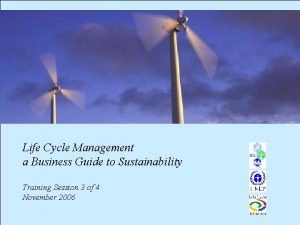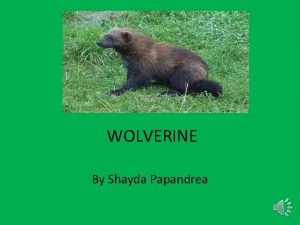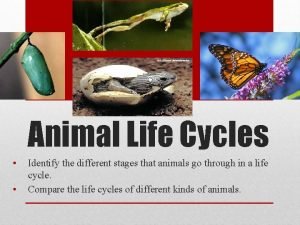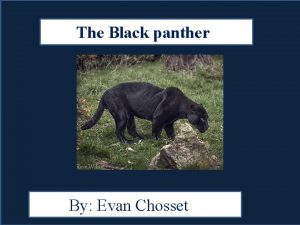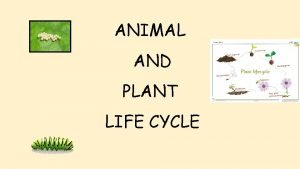Animal Life Cycle Study Guide S O L




- Slides: 4

Animal Life Cycle Study Guide S. O. L. 2. 4 Key Concepts • Animals undergo a series of orderly and identifiable changes in their life cycles. • Some animals (frogs and butterflies) undergo distinct stages during their lives, while others (deer) generally resemble their parents from birth to maturity and do not have distinct stages. • Changes in living things over time occur in cycles and differ among various animals. Essential Knowledge • In order to meet this standard, it is expected that students will describe changes in the life cycle of a butterfly and a white-tailed deer. • compare and contrast life cycles of a frog and a butterfly and a white-tailed deer.

White –tailed Deer Information • White-tailed deer are the largest herbivores in Virginia. • They are found in all areas of Virginia including forests, open fields, mountain tops, coastal islands, and in cities and towns. • Their diet consists of grasses, leaves, nuts, fruits, and fungi. Virginia’s white-tailed deer have few predators. • Newborn white-tailed deer are called fawns. • They become yearlings at 14 to 18 months of age. • As adults, males are called bucks and females are called does. • White-tailed deer are tan or reddish brown in the summer and grayish brown in the winter. The underside and throat are white, and the tail is brown above and white below. • A white-tailed deer’s lifespan averages eight years.

fawn doe White. Tailed White Tailed Deer Life Cycle yearling buck

Butterfly Life Cycle Egg Larva Pupa Adult
